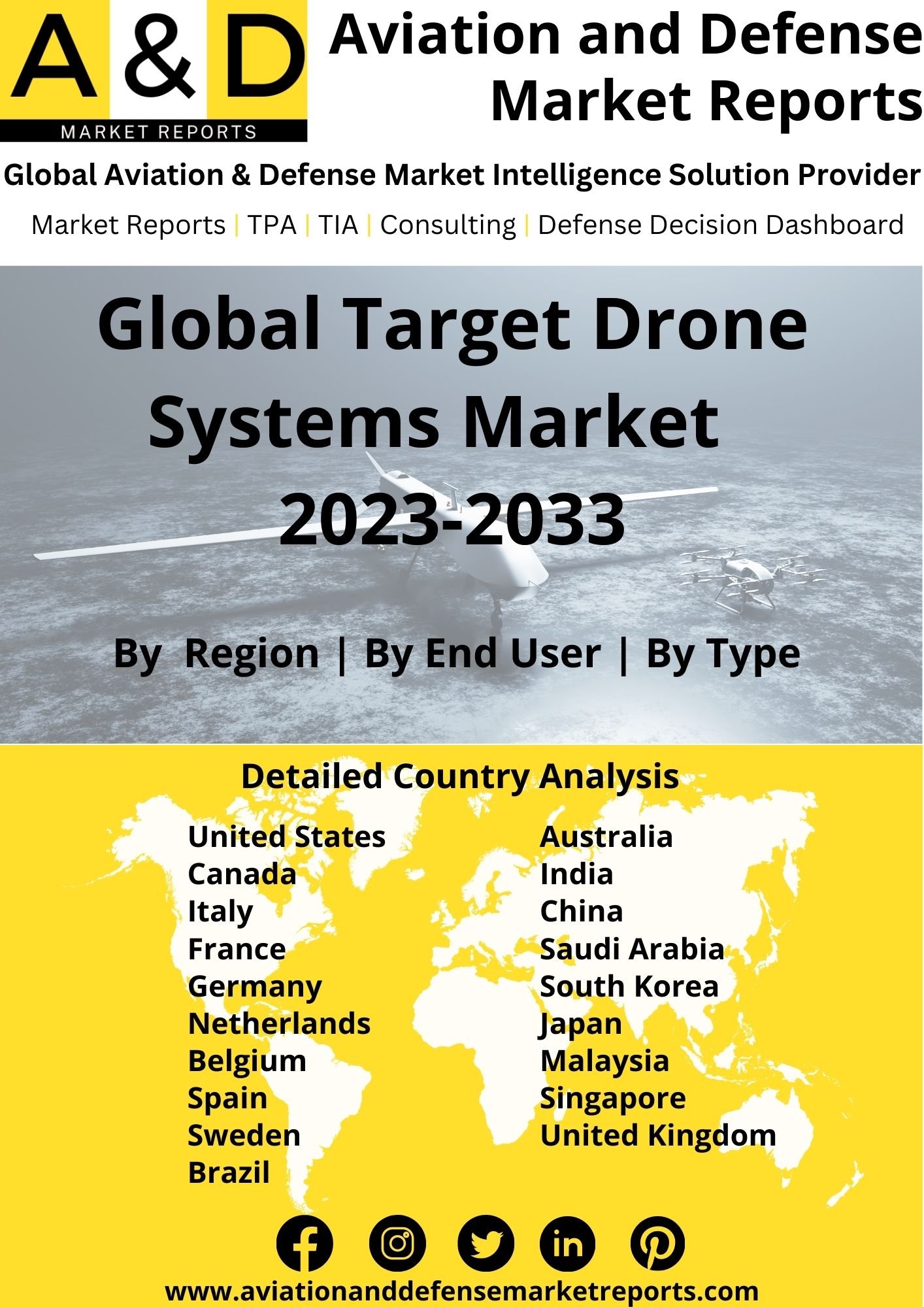Description
Target Drone Systems Market
Frequently Asked Questions of Target Drone Systems Market
During military drills or weapon test launches, the aircraft uses remote control or pre-set flight paths and modes to imitate enemy aircraft or incoming missiles, giving fictitious targets and shooting opportunities for various types of artillery or missile systems. There are target drone system market aircraft that are specifically made, as well as some modified older aircraft that have been used before.
The following equipment and specialized devices are used to control target drones: flight control system (including programme control or radio command control), shooting accuracy of the measurement device, flight parameter passed to the ground radio telemetry devices, simulation of the enemy air attack weapon typical infrared radiation and scattering area equipment, radio interference simulation equipment, etc. Any form of air target can be simulated by the special target aircraft during a space maneuver. The takeoff technique (from the ground, from a carrier aircraft, from a ground launcher, or from a ship launcher) and the control method determine the use characteristics of the target aircraft (program control or operator control).
A number of assistive technology devices are necessary for using the target aircraft, and the target aircraft itself is outfitted with a target integrated device. Target aircraft with early gasoline engines and propellers typically use artificial remote controls, which are progressively phased out as technology advances. A new engine, unmanned autopilot, satellite positioning, navigation, and many other new scientific and technological components have been added to the new target drone systems, which is based on the original straightforward remote control target. These target drones undergone extensive testing for durability, cost-cutting, safety recovery, and other factors before being completed.
Major factors driving Target Drone Systems Market Growth
One of the major factors driving growth will be the increasing demand for target drones due to increasing training programmes across armed forces around the world and testing of new weapons. Both these factors will continue to drive the Target Drone Systems market size going forward.
Trends influencing the Target Drone Systems Market Size
Target Drone Systems market trends, Next-generation sensors that can mimic real battlefield condition will a key driving force behind the growth of the Target Drone Systems market size. Target Drone Systems market trends, AI and Machine learning will also play a significant role in the Target Drone Systems market growth as these technologies enable autonomous operation. Increasing demand for multi-mode drone which can function as target drone as well as decoy drone will also be a significant driver of the Target Drone Systems market growth. Target Drone Systems market forecast, the rise of electric propulsion will give rise to target drones which have no carbon emissions.
Target Drone Systems Market Forecast & Dynamics
Target Drone Systems market analysis, increasing defense spending will drive the market for new procurement activities. Procurement will also be driven by prevailing geo-political conditions in Europe and the Asia Pacific. Cross border aggression will give way to increased combat training and war-games in these regions. Target Drone Systems market analysis, the increasing demand for programmmes such as conversion of older generation fighter aircrafts into target drones will also be a significant driver for the target drone market in developed nations.
Target Drone Systems Market Analysis for Recent Developments
Target Drone Systems market reports, the DRDO-designed and developed ABHYAS drone weighs 75 kg and will serve as a target for various missile systems. It can also be employed as a decoy aircraft because it can reach an altitude of more than five kilometers at half the speed of sound. During the test flight, the aircraft’s capabilities at low altitude, including sustained level and high mobility, were shown. The target aircraft was being tracked by several tracking instruments, including radar and an electro-optical targeting system, that were deployed by ITR. The target aircraft was being flown from a ground-based controller in a pre-designated low-altitude flight route.
Target Drone Systems market analysis, a 1.5 million pound ($1.8 million) contract with the Royal Navy has been given to QinetiQ in order to test the “military effect” of its Banshee Jet80+ drone off the HMS Prince of Wales. As part of the aircraft carrier’s first deployment off the American east coast, the trials will start later this year. The experiment offers a chance to assess the Banshee’s intelligence, surveillance, and reconnaissance capacities as well as its precision in determining ally or enemy. During the trials, a number of dummy cruise missiles and adversary jets will be used to help professionals practice using the drone in the field. Additionally, the car will be used in other test phases as a dummy.
Development of a pulsejet-powered air dummy is funded by the US Air Force. The US Air Force (USAF) continues to look for less complex and expensive ways to fuel unmanned aerial vehicles (UAVs) and cruise missiles, therefore it is sponsoring the development of a new pulsejet-powered decoy. Wave Engine announced on 22 June that the USAF Armament Directorate had given it a $1 million contract to create and demonstrate a “Versatile Air-Launched Platform (VALP)”.
The market has emerged as a critical component in the realm of defense training and testing, offering realistic and cost-effective solutions for honing missile systems, radar capabilities, and air defense systems. Target drones, unmanned aerial vehicles designed to simulate various threat scenarios, play a pivotal role in providing realistic training environments for military forces worldwide. The market is witnessing substantial growth driven by the increasing emphasis on ensuring the readiness and effectiveness of defense systems against evolving threats.
Technological innovations within the Target Drone Systems market size include the development of sophisticated autonomous flight capabilities, advanced electronic countermeasures, and realistic target profiles. These innovations enable military forces to conduct comprehensive and dynamic training exercises, improving their ability to respond to diverse aerial threats.
Geopolitical considerations and the imperative for maintaining a credible defense posture drive investments in Target Drone Systems globally. Nations recognize the strategic importance of realistic and adaptable training scenarios to ensure their defense forces are well-prepared for a spectrum of potential threats. In 2023, the global Target Drone Systems market growth represents a commitment to cutting-edge technology in the pursuit of military preparedness and the ongoing evolution of defense capabilities.
![Global_Target_Drone_Systems_Market_2024-2034[1] Global_Target_Drone_Systems_Market](https://aviationanddefensemarketreports.com/wp-content/uploads/2022/08/Global_Target_Drone_Systems_Market_2024-20341.jpg)






